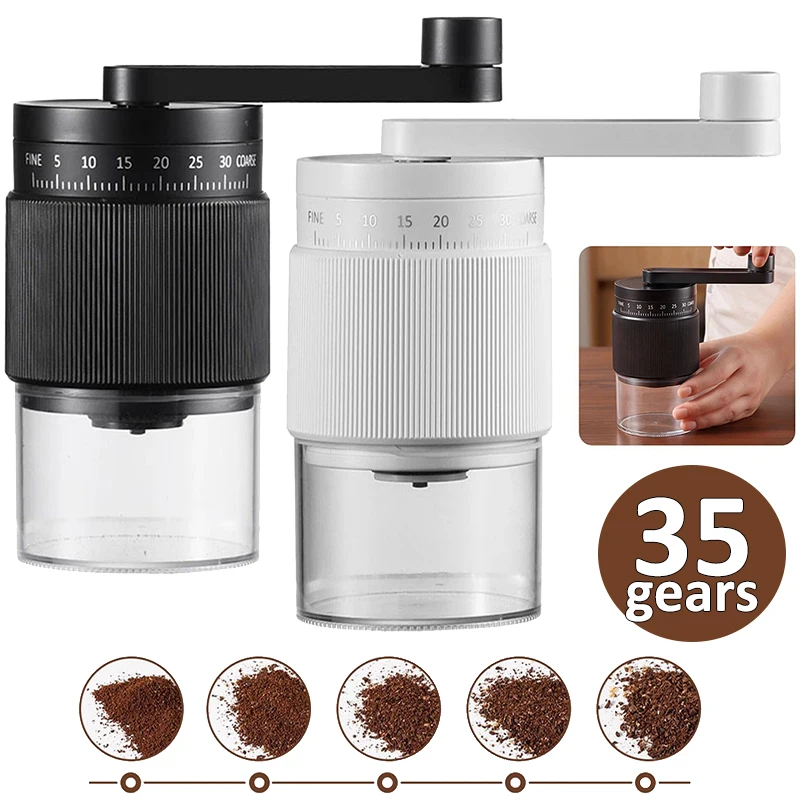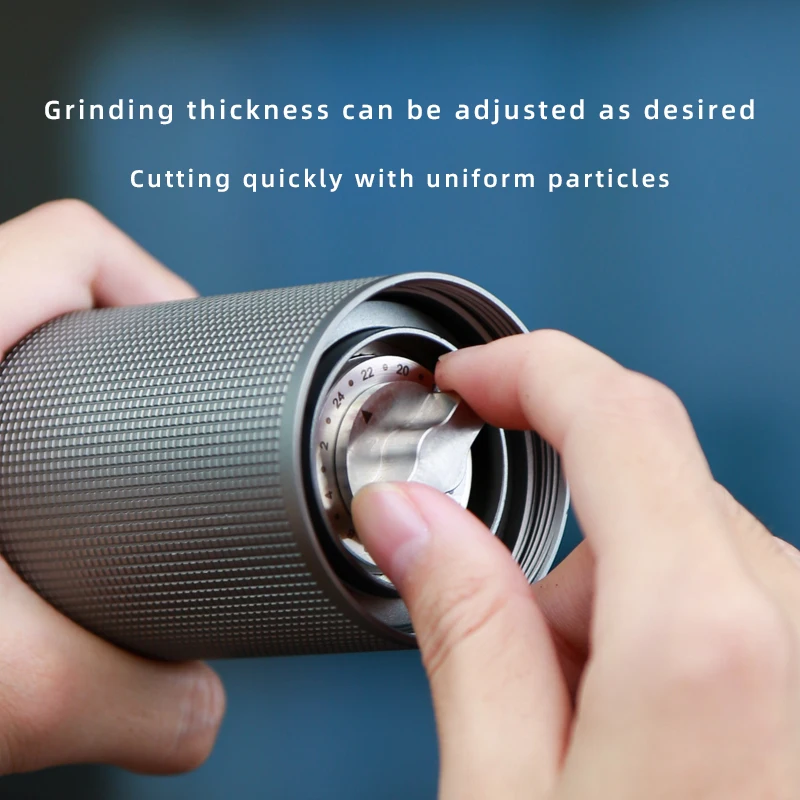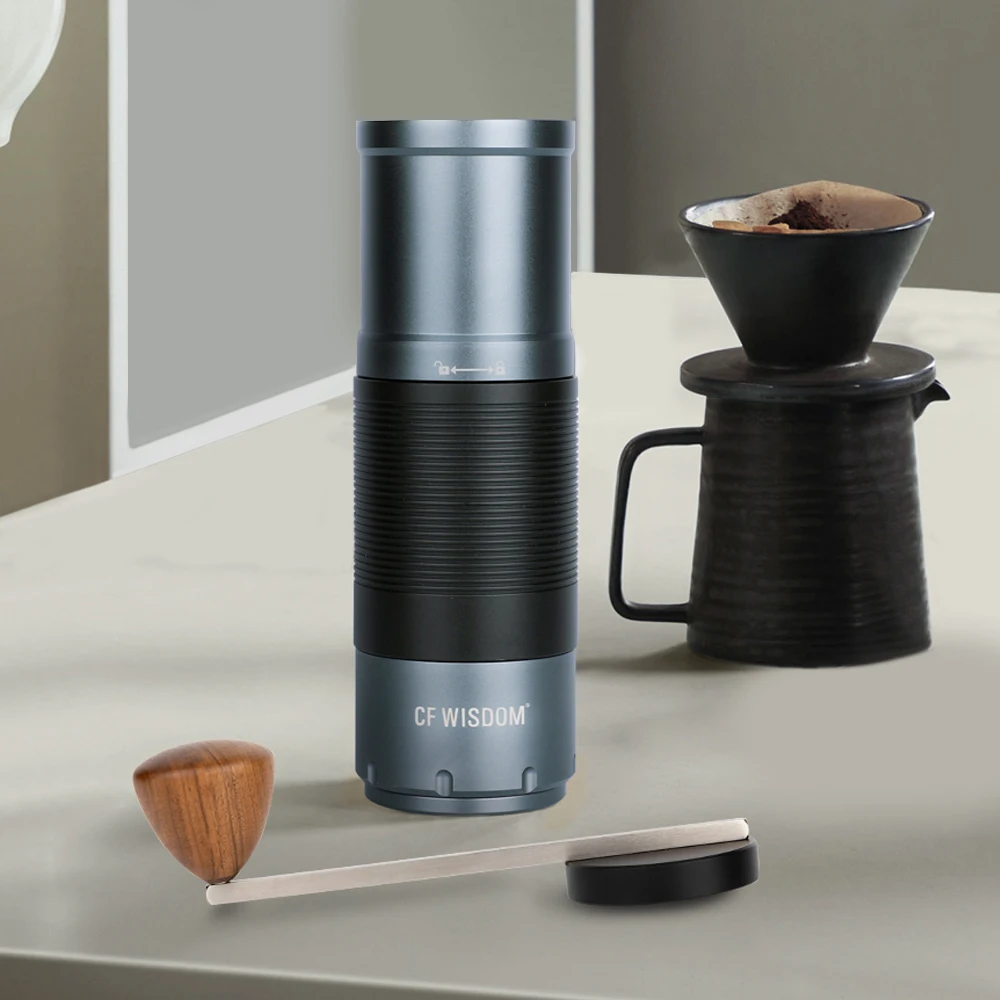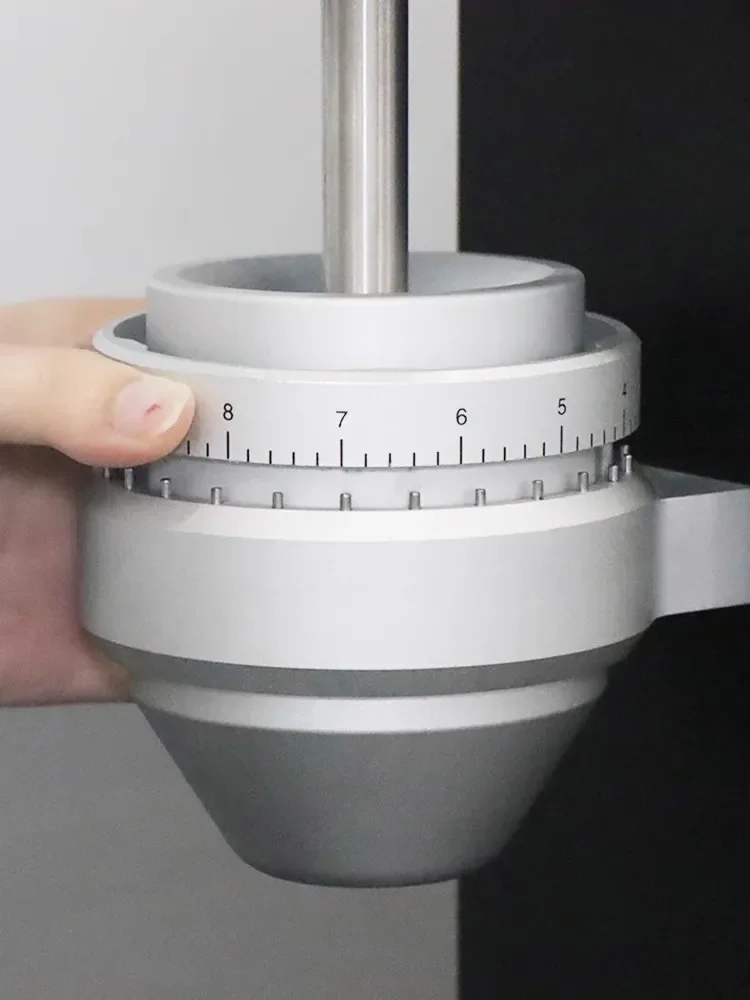Understanding Burrs: The Heart of Every Quality Coffee Grinder
At the core of every exceptional cup of coffee lies a crucial yet often overlooked component: the burr grinder. Burrs are the specially designed grinding surfaces that crush coffee beans into particles of relatively uniform size. Unlike blade grinders that chop beans randomly, burr grinders crush beans between two surfaces with carefully engineered patterns of teeth or grooves.
This fundamental difference in grinding mechanism creates a dramatic impact on your coffee’s taste. When coffee particles are uniform in size, they extract evenly during brewing, resulting in balanced flavor. Inconsistent particles—a mix of fine powder and chunky fragments—lead to both under-extraction (sour notes) and over-extraction (bitter notes) simultaneously.
The coffee world has developed specific terminology to describe this phenomenon. “Fines” are the tiny dust-like particles that over-extract quickly, while “boulders” are the larger chunks that remain under-extracted. A quality burr’s job is to minimize both extremes, creating what specialists call optimal “particle size distribution.”
Understanding how precise espresso grind settings influence extraction is the first step in appreciating why burr design—particularly size—plays such a pivotal role in your daily brew.
Flat vs. Conical Burrs: Understanding the Two Main Types
When exploring coffee grinders, you’ll encounter two primary burr designs, each with distinct characteristics that affect your grinding experience and coffee flavor.
Conical Burrs
Conical burrs feature a cone-shaped inner burr that fits inside a ring-shaped outer burr. As beans pass through, they’re crushed between these two surfaces in a vertical grinding action. This design:
– Generates less heat during grinding
– Operates more quietly
– Creates a bimodal particle distribution (some fines alongside medium particles)
– Often preferred for traditional espresso with rich body
Flat Burrs
Flat burrs consist of two parallel ring-shaped discs with teeth that face each other. Coffee beans are crushed between these horizontal surfaces. This configuration:
– Produces extremely consistent particle size (unimodal distribution)
– May generate slightly more heat
– Usually operates at higher noise levels
– Often preferred for light roasts and filter coffee where clarity is desired
The differences in grind uniformity between burr designs directly impact extraction and ultimately affect your cup’s flavor profile. Neither type is inherently superior—your preference will depend on your taste, brewing method, and the specific coffee characteristics you value most.
| Feature | Conical Burrs | Flat Burrs |
|---|---|---|
| Heat Generation | Lower | Higher |
| Noise Level | Quieter | Louder |
| Grind Consistency | Bimodal (some fines) | Very uniform |
| Flavor Profile | Body, richness | Clarity, brightness |
| Typical Applications | Traditional espresso, medium-dark roasts | Light roasts, pour-over, filter |
How Burr Size is Measured: Understanding the Numbers
When coffee grinder specifications mention burr size, they’re referring to the diameter of the burrs, measured in millimeters. However, measurement methods differ slightly between the two main types:
- Conical burrs: Measured by the outer diameter of the ring burr
- Flat burrs: Measured by the diameter of the flat burr discs
These measurements serve as a useful reference point when comparing grinders within similar categories. Typical size ranges include:
- Entry-level home grinders: 30-50mm
- Examples: Most affordable electric burr grinders, many hand grinders
- Prosumer/high-end home grinders: 50-75mm
- Examples: Mid-range to premium home espresso grinders
- Commercial grinders: 60-100mm+
- Examples: Café-grade equipment designed for high volume
Understanding these measurements provides context when selecting appropriate burr sizes for espresso and other brewing methods. While larger numbers often correlate with higher performance potential, they also typically come with higher price tags and larger physical footprints.
The Direct Impact of Burr Size on Grinding Performance
Burr size directly influences several key aspects of grinder performance that affect both the grinding experience and coffee quality:
Grinding Speed and Throughput
Larger burrs process coffee beans significantly faster because they have:
– Greater surface area for bean contact
– More cutting teeth engaged simultaneously
– Wider grinding pathways for coffee to pass through
For example, a 38mm burr might grind 1-1.5 grams per second, while a 64mm burr can process 2-3 grams in the same time—making larger burrs especially valuable in high-volume settings.
Heat Generation and Dissipation
Heat is the enemy of coffee flavor, as it can volatilize aromatic compounds before brewing. Larger burrs offer two thermal advantages:
– Faster grinding means less time for heat to build up
– Greater mass provides better heat dissipation
– Lower RPM requirements reduce friction-generated heat
Grind Consistency and Distribution
Larger burrs generally improve consistency because:
– Their greater cutting surface provides more precise particle sizing
– They can be manufactured with more teeth and complex cutting patterns
– They typically maintain better alignment under pressure
– They operate with less flex and vibration during grinding

The relationship between optimal grind settings and burr size becomes especially crucial for demanding brew methods like espresso, where tiny adjustments in particle size dramatically impact extraction quality.
Motor Requirements and Longevity
Larger burrs typically require more powerful motors but often last longer due to:
– Lower RPM requirements, causing less wear over time
– Higher-quality materials and manufacturing standards
– Better stability and less stress on components
Does Burr Size Affect Coffee Flavor?
The most important question for many coffee enthusiasts is whether burr size translates to noticeable differences in the cup. The answer is nuanced but significant:
Direct Flavor Impacts
Extraction Consistency: Larger burrs typically produce more uniform particles, leading to more even extraction—this means fewer competing flavors from under and over-extracted grounds.
Heat Management: By generating less heat during grinding, larger burrs help preserve volatile aromatics that might otherwise be prematurely released, allowing these flavors to emerge during brewing instead.
Particle Distribution Profiles: The way larger burrs fracture beans can create subtly different extraction patterns—conical burrs typically produce more fines, enhancing body, while large flat burrs often create cleaner clarity.
Brewing Method Compatibility: Different brewing methods extract coffee differently, and larger burrs often allow for more precise calibration to each method’s ideal particle size.
The choice of burr materials for espresso preparation works in concert with burr size to influence flavor outcomes. While casual coffee drinkers might not immediately notice these differences, they become increasingly apparent as one develops a more nuanced palate and experiments with different brewing parameters.
Who Will Notice the Difference?
- Espresso drinkers: Most sensitive to differences due to espresso’s intense extraction process
- Light roast enthusiasts: Cleaner particle distribution helps highlight delicate flavor notes
- Those comparing side-by-side: Differences become more obvious in direct comparison
- Experienced tasters: Developed palates can detect subtler variations in extraction quality
Beyond Size: Other Critical Burr Factors That Impact Performance
While size plays a significant role in burr performance, several other factors are equally—sometimes even more—important for achieving superior grind quality:
Burr Geometry and Tooth Design
The specific pattern of teeth, their shape, angle, and spacing dramatically impact how beans fracture. Even similarly sized burrs can produce markedly different results based on:
– Cutting edge angles and sharpness
– Distance between teeth
– Feed rate from outer to inner grinding zones
– Exit path design
Burr Materials
The composition of the burrs themselves affects durability, heat conductivity, and grinding performance:
– Steel burrs: Sharper cutting edges, better for light roasts, typically found in higher-end grinders
– Ceramic burrs: Stay sharp longer, transfer less heat, but more brittle
– Titanium-coated burrs: Enhanced durability and reduced sticking with oily beans
Alignment Precision
Perhaps the most critical factor regardless of size is how precisely the burrs align with each other:
– Perfect alignment ensures uniform distance between grinding surfaces
– Even slight misalignment creates inconsistent particle size
– Higher-end grinders feature better machining tolerances and alignment systems
Understanding how burr size affects overall coffee grind quality requires considering these factors collectively rather than in isolation. A perfectly aligned 50mm burr set will often outperform a poorly aligned 65mm set.
Motor Power and Speed Control
The motor driving the burrs significantly impacts performance through:
– Sufficient torque to maintain consistent speed under load
– Heat generation during extended grinding sessions
– Speed stability, especially at fine grind settings
– Ability to start and stop without compacting grounds
Matching Burr Size to Your Brewing Method
Different brewing methods extract coffee in unique ways, requiring specific particle sizes and distributions for optimal results. Here’s how burr size considerations vary by brewing method:
Espresso
Espresso demands the most from your grinder due to its intensive extraction process and sensitivity to particle size distribution:
– Recommended minimum: 50mm burrs for home use, 60mm+ for high volume
– Benefit from large burrs: Exceptional consistency at very fine settings
– Flat vs. Conical: Both work well, with flat burrs typically producing cleaner shots and conical adding body
– Why it matters: Espresso extracts under pressure in 25-30 seconds, magnifying any inconsistencies
Pour-over/Drip
Filter brewing methods benefit from:
– Recommended minimum: 40mm burrs for optimal results
– Critical factor: Minimizing fines that can clog filters and cause over-extraction
– Flat vs. Conical: Flat burrs often preferred for their uniform distribution
– Why it matters: Clean, clear flavors depend on even extraction across all particles
French Press/Cold Brew
Immersion methods typically using coarser grinds:
– Recommended minimum: 38mm burrs are usually sufficient
– Critical factor: Consistent coarse grind without excessive fines
– Why it matters: Fines can bypass filters and create muddy texture

Understanding the relationship between espresso machines and specific grind sizes helps optimize extraction for each unique brewing system. While some brewing methods are more forgiving of grind inconsistency, investing in appropriate burr size for your primary brewing method can significantly elevate your coffee experience.
Making Smart Choices: Burr Size Considerations When Buying a Grinder
When investing in a coffee grinder, burr size should be one factor in a balanced decision-making process:
Setting Priorities Based on Your Brewing Method
- Espresso-focused: Prioritize larger burrs (50mm+) with precise adjustment capability
- Multiple brewing methods: Consider versatile grinders with good range from fine to coarse
- Filter coffee only: Mid-sized burrs (40-50mm) with excellent consistency at medium settings
- Occasional use: Smaller burrs may suffice if grinding small quantities less frequently
Interpreting Manufacturer Specifications
Look beyond just the burr size number to understand:
– Burr material and coating technology
– Alignment system and adjustment mechanism
– Motor power and speed control capabilities
– Retention (how much coffee gets trapped in the grinder)
Budget Considerations
- Entry-level burr grinders ($100-250): Typically 38-40mm burrs
- Mid-range ($250-500): Usually 40-55mm burrs
- High-end home ($500-1000): Often 55-64mm burrs
- Commercial grade ($1000+): 64-98mm burrs
As you explore options, consider that flat burr hand grinders offer excellent quality in compact packages. Many coffee enthusiasts find that quality manual coffee burr grinders provide exceptional value compared to electric counterparts at similar price points.
Fine Adjustment Hand Grinder, Precision Manual Grinder, Travel Coffee Grinder
Price range: $185.11 through $494.63 Select options This product has multiple variants. The options may be chosen on the product pageHand Burr Grinder, Hand Crank Coffee Grinder, Manual Espresso Grinder, Portable Coffee Grinder
Price range: $262.72 through $300.22 Select options This product has multiple variants. The options may be chosen on the product pageManual Burr Mill, Manual Coffee Grinder Stainless Steel, Manual Coffee Mill Grinder, Mechanical Coffee Grinder
Price range: $127.26 through $130.32 Select options This product has multiple variants. The options may be chosen on the product pageHand Burr Grinder, Manual Coffee Grinder Stainless Steel, Precision Manual Grinder
Price range: $183.64 through $187.52 Select options This product has multiple variants. The options may be chosen on the product page
For those seeking maximum precision, specialized precision manual grinders offer remarkable consistency despite their compact size. Traditional manual burr mills combine classic design with functional performance, while ceramic burr coffee grinders offer excellent heat management and durability.
Are Larger Burrs Always Better? Debunking Common Myths
Q: Should I always choose the largest burrs possible?
A: Not necessarily. While larger burrs offer theoretical advantages, they’re not automatically better in every situation. A well-designed, precisely manufactured 45mm burr can outperform a poorly aligned 65mm burr. Consider your specific needs, budget, and space constraints.
Q: Is burr size the most important factor when choosing a grinder?
A: Burr size is just one of several critical factors. Alignment precision, motor quality, and burr design often matter more than sheer size. A grinder with excellent alignment and 50mm burrs will typically outperform one with poor alignment and 65mm burrs.
Q: At what point do the benefits of larger burrs diminish?
A: For home users, the benefits start diminishing beyond 64-65mm for most applications. The jump from 38mm to 55mm is much more significant than from 64mm to 83mm for typical home brewing volumes and methods.
Q: Do larger burrs always produce better tasting coffee?
A: Not automatically. Taste depends on many factors including grind consistency, heat generation, and particle distribution profile. Larger burrs contribute positively to these factors but don’t guarantee better taste by themselves.
Maintaining Your Burrs for Optimal Performance
Proper maintenance ensures your burrs—regardless of size—perform at their best over their entire lifespan:
• Regular cleaning is essential to remove coffee oils and residue that accumulate over time. These residues can affect both grind consistency and flavor.
• Clean burrs safely by using grinder-specific cleaning products or uncooked rice (for some models). Avoid water on steel burrs to prevent rust.
• “Seasoning” new burrs involves running a small amount of low-quality beans through them to smooth microscopic rough edges. This primarily applies to higher-end flat burr grinders.
• Watch for signs of wear, including inconsistent grind size, increased grinding time, or unusual noises. Most home grinders need burr replacement after grinding 500-1000 pounds of coffee.

• Different burr materials require different care: Steel burrs need protection from moisture, while ceramic burrs require careful handling to prevent chipping.
What About Hand Grinder Burrs?
Manual grinders have seen remarkable innovation in recent years, particularly in their burr designs. While typically smaller than electric counterparts, premium hand grinder burrs offer exceptional performance:
Most manual grinders feature burrs between 38mm and 48mm—smaller than many electric grinders but often with comparable or superior grind quality due to excellent manufacturing precision. The grinding effort differs significantly between sizes; a 38mm burr might require 2-3 times the effort of a 48mm burr for the same amount of coffee.
Premium hand grinders often use specialized burr geometries optimized for manual force application. This makes them particularly effective for travel use, where their compact size and independence from electricity become significant advantages. For many coffee enthusiasts, a high-quality hand grinder represents better value than an electric grinder at a similar price point.
Despite their smaller size, well-designed hand grinder burrs can produce particle consistency rivaling much larger electric grinder burrs, making them excellent choices for those prioritizing quality over convenience or speed.







